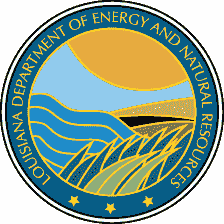Office of Coastal Management
Hydromodification Brochure
|
Heavy rainfall in Louisiana rinses a variety of pollutants off the land, sending them into our canals, bayous, rivers, lakes, and estuaries. This "nonpoint source pollution"comes from scattered or diffuse sources and is not discharged from a single concentrated "point source" such as a pipe outlet. Nonpoint source pollutants are rinsed off streets and parking lots, and washed from crop fields, livestock pens, construction sites, and from lands on which some type of forestry operation is being conducted. Some of this pollution makes its way to our salt marshes, beaches, oyster beds, bays and other coastal waters. There pollutants can accumulate, threatening organisms ranging from shrimp, oysters, and redfish, to pelicans, bald eagles, ... and people. |
 |
WHAT ARE SOME EXAMPLES OF NONPOINT SOURCE POLLUTANTS FROM HYDROMODIFICATION?
When development projects that modify hydrology are carried out without paying attention to protecting our soil and water resources, a variety of problems can result. The main nonpoint source pollution problem from hydromodification projects is sediment and turbidity. Others include excessive nutrients (mainly nitrogen and phosphorus), chemicals, oils and lubricants, and organic debris. Other negative impacts relate to the general disruption of natural drainage, including increased irregularity of stream flows, and elevated water temperatures. The presence and severity of these problems depend on site characteristics, weather conditions during the operations, and the actual practices employed. We can't control the weather, but we can try to use the best practices that we have available for managing the land and its resources.
HOW IS LOUISIANA PLANNING TO ADDRESS THIS SET OF PROBLEMS?
Louisiana is developing a program to reduce pollution from "nonpoint" or widely diffuse sources that may impact coastal waters. While we can never stop all of the nonpoint source water pollution, there are practices that each one of us can adopt to help protect and conserve our soil and water resources. The program will consist of menus of recommended "best management practices" (BMPs), or actions that can be taken to address specific problem issues, as well as a plan to help bring about implementation of these practices. This Coastal Nonpoint Pollution Control Program, or CNPCP, is sometimes referred to as the "CZARA" program, the "6217" program, or the "Coastal Nonpoint Source" program. The Louisiana Dept. of Energy and Natural Resources (LDNR) is the designated lead agency coordinating its development. The CNPCP will address six major source categories: Agriculture, Forestry, Urban Runoff, Hydrology Modifications, Marinas and Recreational Boating, and Wetland Conservation. Each source category is broken down into as many as ten to fifteen problem issues called management measures.
Management measures must use economically achievable approaches to reduce pollutants that would impact our coastal waters, applying best available technology. Louisiana is developing menus of recommended best management practices or BMPs to address each management measure. While not all of these best management practices will be appropriate for all places and situations, most of us can do at least something more or different to better manage our land and water. Listed below are management measures with examples of corresponding BMPs
- CHANNELIZATION/CHANNEL MODIFICATION: PHYSICAL AND CHEMICAL CHARACTERISTICS OF SURFACE WATERS
- Evaluate anticipated physical and chemical effects of proposed channel modification projects. Consider using computer modeling, when resources permit.
- Evaluate streambank and levee protection measures such as rip-rap or sack revetment, erosion control fabrics and mats, and vegetation plantings.
- CHANNELIZATION/CHANNEL MODIFICATION: INSTREAM AND STREAMSIDE HABITAT RESTORATION
- During the planning phase of a hydrology modifying project, review and evaluate BMPs that would protect and conserve natural habitats.
- Utilize native species in habitat enhancement and restoration efforts.
- Use models or other ecological evaluation methods to assess the biological impacts of new channelization projects.
- MANAGEMENT MEASURE FOR STABILIZATION OF ERODING STREAMBANKS AND SHORELINES
- Restore damaged habitat along shorelines and streambanks using vegetative techniques.
- For areas where marsh creation and vegetative techniques are not feasible, use structural engineering practices.
- For existing structures being flanked or in danger of failing, utilize erosion control methods such as return walls, toe protection, or other appropriate techniques.
- Help establish and respect "no-wake zones" for boats. This reduces shoreline erosion.
- Set back construction and development away from streambanks and shorelines.
- Direct drainage from upslope sources, away from banks and other vulnerable downslope features
HOW CAN INDIVIDUALS GET INVOLVED?
Public participation and public education/outreach will be important in the Coastal Nonpoint Pollution Control Program. The Best Management Practices or "BMPs" are the "best practices" that we know of at this time, but they can be, and will be, improved, upgraded and replaced over time as we work out even better ways of managing our resources. We welcome and encourage the involvement of all interested Louisianians in this process. Additional comments and questions can be addressed to the:
| Louisiana Dept. of Energy and Natural Resources Office of Coastal Management P.O. Box 44487 Baton Rouge, LA 70804-4487 Telephone: 1 (800) 267-4019 email: Donald.Haydel@la.gov |
Technical and graphic support provided by LSU Agricultural
Center's Louisiana Cooperative Extension Service

